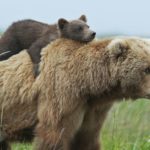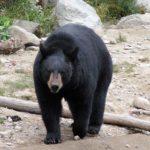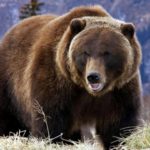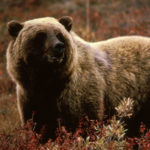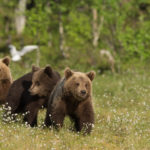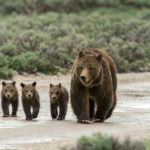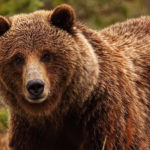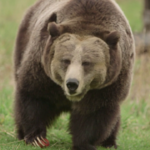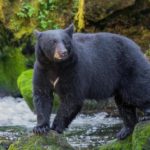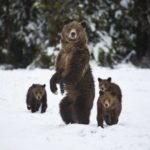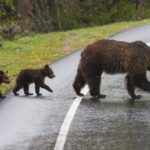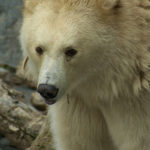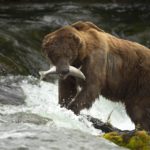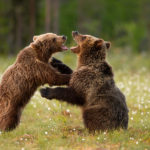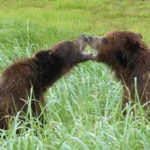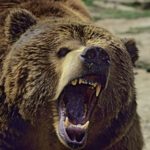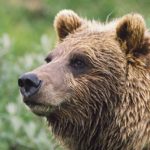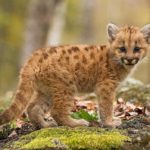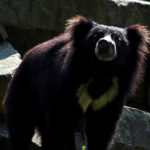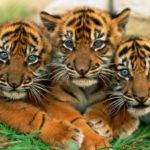Grizzly bears
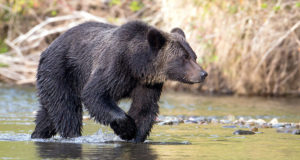 Grizzly is a subspecies of a brown bear from the bear family. They dwell in the west of Canada and in Alaska, preferring dense forests and inaccessible mountains. They lead a solitary life, and he has no enemies, except a man.
Grizzly is a subspecies of a brown bear from the bear family. They dwell in the west of Canada and in Alaska, preferring dense forests and inaccessible mountains. They lead a solitary life, and he has no enemies, except a man.
The male has a body length of up to 2.6 meters, and the animal’s weight is approximately 450 kg. The females are “smaller”, and weigh, of course, also less. Dense and long fur of dark brown color with a grayish shade. Moulting occurs twice a year: in autumn and in spring.
Heavy and powerful body, head extended to the nose, strong paws with wide feet and a small tail, which is almost invisible – that’s what he is, a bear. Ears and eyes are small, the nose is wide, the strong jaw has 40 teeth. On the paws of the animal are five fingers with long (up to 15cm) non-retracting claws.
Vision and scent are well developed. At a distance of 25 km, he smells the scent of carrion. And it feeds mainly on plant food, it’s roots, grass, nuts and berries, acorns and, of course, honey. They also eat fish, insects, rodents and carrion. It can also attack larger animals, usually old, sick or young. Cases of attacks on humans, scientists on the latest data explain the lack of food for the bear.
Predators fall into hibernation, and in order to survive the winter well, they eat a lot, accumulating subcutaneous fat. The thickness of fat is 10cm, and the entire stock by weight, about 200kg. In hibernation bears lay down in October – November, and wake up in March – April. There are no exact dates, as these terms depend on climatic conditions.
They can swim well and catch a fish. They are very intelligent animals. In search of food, they easily lift or turn stones. A day eat up to 40 kilograms of food. If necessary, quickly run, developing a decent speed, but for short distances.
In June, mating occurs, but pregnancy will only come in the fall. Fertilized ovules are attached to the walls of the uterus, and wait for a signal about further development, because the future mother needs to accumulate fat for strength and feeding young. Pregnancy will last 180 – 250 days. Bear cubs will be born in the very height of winter (January – February) in a warm, well hidden den.
She dug a deep and reliable hole in advance. The weight of the newborn is from 150 to 700 grams, depending on the number of births. Usually there are two of them, but in general, from observations of one to five. Little cubs are blind and helpless, almost no fur. Eating mother’s fat milk, babies grow quickly. A month later they will open their eyes, they grow furred and chopped teeth.
When they come out of the dens in the spring, they start eating vegetarian food. Despite care and excellent upbringing, little children survive. The female teaches its children to hunt, leads them to “delicious” places, shares their experiences in order to survive in this beautiful but not simple world.
